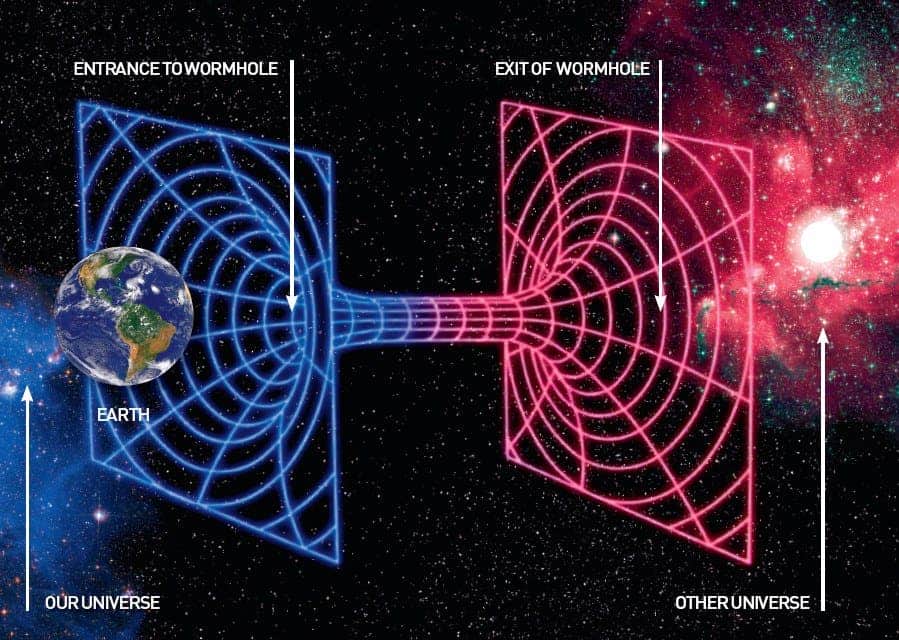One of the predictions derived from Einsten’s theory of general relativity is the existence of wormholes – spacetime shortcuts. In theory such bridges may offer instantaneous travel between the two bridgeheads or wormholes even if these are light-years away from each other. Two independent studies suggest that there’s a link between quantum entanglement and wormholes, or to be more precise: each wormhole has a corresponding pair just like two entangled quantum particles.
Quantum entanglement is nothing short of bizarre. In a pair of entangled particles, a change in the quantum characteristics of one of the particles can’t happen without also causing a change in the other particle, even if these particles are millions of miles away. This concomitant change happens instantaneously, which is why some people liken it to teleportation. I know, it’s a really strange and non-intuitive aspect of the quantum theory of matter – this is why Einstein called it “spooky action at a distance.” For what’s it worth, although quantum entanglement was first theorized a long time ago, only recently did researchers prove that it’s real.
Practical applications for quantum entanglement have already been proposed, as entangled particles have been suggest for use in powerful quantum computers and “impossible” to crack networks. Now, it seems quantum entanglement may be linked to wormholes.
Entangled wormholes
Theoretical physicists Juan Martín Maldacena at the Institute for Advanced Study in Princeton and Leonard Susskind at Stanford University argue that wormholes are nothing but pairs of black holes entangled together. A proposed mechanism of wormhole generation would be that when a black is born, its pair is simultaneously created as well. Moreover, they conjectured that entangled particles such as electrons and photons were connected by extraordinarily tiny wormholes.
[READ] Quantum theory suggests black holes are wormholes
Kristan Jensen, a theoretical physicist at Stony Brook University in New York and his colleague theoretical physicist Andreas Karch at the University of Washington in Seattle sought to investigate entangled particles behave in supersymmety theory which suggests that all subatomic particles have a corresponding partner or pair.
One of the biggest challenges physicists seek to address is developing a unified theory of physics, one that reconciles both general relativity and quantum mechanics. Supersymmetry is one such proposition that aims to unite the two grand theories of physics that explain the large universe (general relativity) and the tiny universe (quantum mechanics).
One huge idea expressed in this theory relates to holography or the notion that actions in this universe may emerge from a reality with multiple dimensions; like a 2-d hologram may give the impression of 3-d object. I’d highly recommend you watch this video of Carl Sagan discussing the tesserat. Anyway, if you imagine a physical system that exists in only 3 dimensions, in theory you can describe that system using objects behaving in the four dimensions that general relativity describes the universe as having (width, length, depth and time).
Jensen and Karch found that if one imagined entangled pairs in a universe with four dimensions, they behaved in the same way as wormholes in a universe with an extra fifth dimension. A wormhole that curves space and time until two points coincide and entanglement may be one of the same thing then.
“Entangled pairs were the holographic images of a system with a wormhole,” Jensen said. Independent research from theoretical physicist Julian Sonner at the Massachusetts Institute of Technology supports this finding.
“There are certain things that get a scientist’s heart beating faster, and I think this is one of them,” Jensen told LiveScience. “One really exciting thing is that maybe, inspired by these results, we can better understand the relation between entanglement and space-time.”










